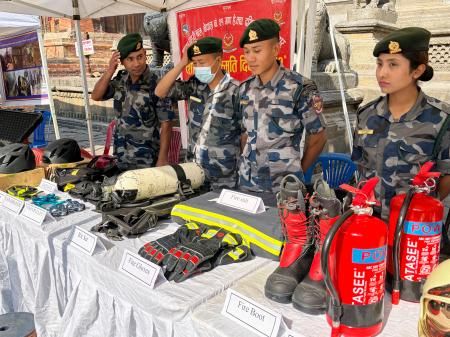Nepal: Rebuilding After the Devastating 2015 Earthquake – A Decade of Progress and Challenges
The 2015 Gorkha earthquake in Nepal remains a stark reminder of nature's destructive power. The 7.8 magnitude quake, and subsequent aftershocks, left a trail of devastation, claiming thousands of lives and rendering countless homes and infrastructure unusable. A decade later, Nepal continues its arduous journey of rebuilding, a process marked by both significant progress and persistent challenges. This article explores the complexities of Nepal's post-earthquake recovery, examining the successes, setbacks, and the ongoing efforts to build a more resilient nation.
The Scale of the Disaster and Initial Response
The April 25th, 2015 earthquake struck Nepal with unprecedented force. The impact was felt across the country, but the Kathmandu Valley and surrounding mountainous regions bore the brunt of the damage. The death toll exceeded 8,000, with tens of thousands injured. Historic temples, ancient cities like Bhaktapur and Patan, and countless homes were reduced to rubble. The immediate aftermath was chaotic, with rescue efforts hampered by the scale of destruction and the challenging terrain. International aid poured in, but coordinating the relief efforts proved a significant logistical challenge.
Key Impacts of the 2015 Earthquake:
- Widespread destruction of housing: Hundreds of thousands were left homeless.
- Significant damage to cultural heritage sites: Irreplaceable historical monuments suffered irreparable damage.
- Infrastructure collapse: Roads, bridges, and vital communication networks were severely affected.
- Economic disruption: The tourism sector, a crucial part of Nepal's economy, was severely impacted.
Progress in Rebuilding Nepal: A Decade of Resilience
Despite the monumental task ahead, Nepal has made considerable progress in the years since the earthquake. The government, along with international organizations and NGOs, has undertaken numerous initiatives focused on:
- Housing Reconstruction: The government's housing reconstruction program has provided grants and technical assistance to rebuild homes. While significant progress has been made, challenges remain in reaching remote communities and ensuring the quality of new construction.
- Infrastructure Development: Roads, bridges, and other vital infrastructure have been repaired and upgraded, improving connectivity across the country. This includes investments in earthquake-resistant designs.
- Cultural Heritage Preservation: Efforts to restore damaged historical monuments and temples have been ongoing, though the task is complex and time-consuming, requiring specialized expertise and significant funding.
- Disaster Risk Reduction: Nepal has invested in strengthening its disaster preparedness and response mechanisms, including early warning systems and community-based disaster risk reduction programs. This is crucial for future resilience.
Ongoing Challenges and Future Outlook
Despite the advancements, Nepal still faces considerable challenges in its recovery efforts:
- Funding limitations: Securing sufficient funding for long-term reconstruction remains a hurdle.
- Corruption and bureaucratic hurdles: Inefficiencies and corruption have hampered the timely implementation of reconstruction projects.
- Access to remote areas: Reaching remote and marginalized communities remains a significant logistical challenge.
- Ensuring earthquake-resistant construction: Building codes and enforcement mechanisms need continuous improvement to guarantee long-term resilience.
Conclusion: Building a Resilient Future for Nepal
Nepal's journey of rebuilding after the 2015 earthquake is a testament to the resilience of its people and the commitment of the international community. While significant progress has been made, the path to complete recovery remains long and challenging. Addressing the ongoing challenges through effective governance, improved coordination, and sustained international support is crucial to ensure a more resilient and prosperous future for Nepal. The lessons learned from this devastating event will undoubtedly inform disaster preparedness and response strategies globally.
Keywords: Nepal earthquake 2015, Nepal reconstruction, earthquake recovery, Nepal rebuilding, disaster relief, earthquake damage, Nepal housing reconstruction, cultural heritage preservation, disaster risk reduction, Nepal aid, post-earthquake recovery.
Call to Action: Learn more about how you can support Nepal's ongoing recovery efforts by visiting [link to relevant NGO or charity].
